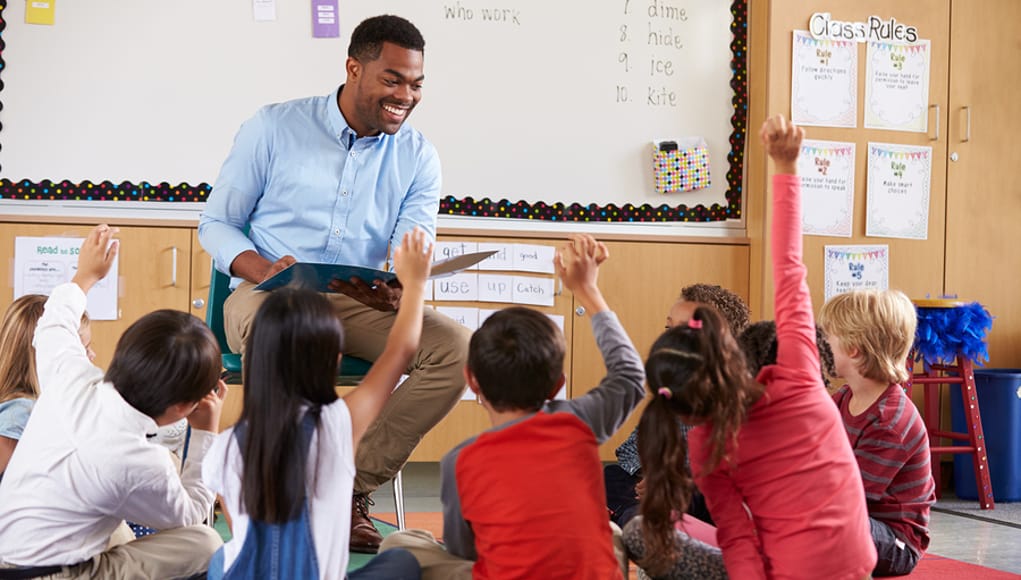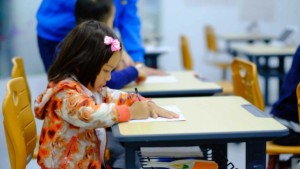How Continuous Feedback Fosters Learning

By Lindsay Portnoy
Whether it is solving a story problem or writing an essay on child development, every piece of work in the classroom is done intentionally, most often towards a specific learning goal. Providing feedback effectively ensures that students are clear about the learning goals they are working towards while modeling how they can apply feedback before, during, and after they complete their work. By creating a culture of growth and learning, feedback becomes part of a process of continuous growth and progress instead of a means to an end.
The Timing of Effective Feedback
The learning sciences’ self-determination theory asserts that an individual’s behavior in an environment is influenced by their feelings of autonomy, competence, and relatedness (see the Handbook of Motivation at School). These are essential elements of successful formative feedback. Moreover, the aspect of timing is especially relevant for teachers to use self-determination as a framework for providing timely, relevant, and actionable feedback to learners. Feedback that is provided before, during, and after a task holds all the hallmarks of self-determination theory by fostering the choice, collaboration, and communication necessary to ensure students feel autonomous, competent, and a sense of relatedness as they work to achieve learning goals.
Feedback before learning. Feedback given before learning sets the course for instruction. For instance, when learning about a compass rose, it’s ideal to assess if students can identify the continents on a map. Using landforms frames the utility of using a compass rose and ensures students see the “why” of the lesson.
Feedback before learning also sets the stage for success, helps learners identify learning goals, ensures shared expectations, and can foster a sense of choice. Asking quick questions before learning not only helps learners prepare for their work (e.g., rose compasses have something to do with locating continents), but can also serve to differentiate the depth and breadth of their work. It is the student-driven feedback before learning that truly fosters a sense of choice and autonomy.
Regardless of a student’s age, feedback before learning should revolve around preparation and setting expectations while encouraging autonomy, whether it’s in the perspective from which the student is writing, the theory that is being discussed, or the way in which a theorem is applied in practice. And while feedback during learning may look different for students in a second-grade classroom from those in a graduate classroom, all students can help co-construct expectations and have choices in how they enact their learning goals. In both primary and college classrooms, students can co-create checklists or rubrics to detail the most important aspects of the work ahead.
Feedback during learning. While students are progressing towards a learning goal there are multiple opportunities to check for understanding from both the teacher, a classmate and on the student’s own. As students practice using a compass rose during geography, students demonstrate their understanding of principal directions using a range of landforms.
Teacher feedback during learning. When given during the learning process, students see feedback as informative rather than evaluative, since the work is still in progress. Did the student find a state west of Texas? Check-ins during learning are a great way to provide evaluation during learning. A simple “thumbs up” or “thumbs down” is a quick way to make sure students are ready to continue or to see if there is a need for clarification. Other check-ins using real-time digital tools like Socrative or Kahoot are great for identifying areas of confusion about learning, expectations of an assignment, and where students are in their learning progression.
Self and peer-review feedback of ongoing work can be used to foster a sense of community and collaboration in the classroom. By using co-constructed tools like checklists and rubrics, students have clear expectations of learning goals. Students can practice using these tools to help themselves and their peers find success in their work. Practicing evaluating peers’ work with the same tool that they will be evaluated upon allows students to be reflective, and provides low-stakes feedback to students. Self and peer-review allow students to take ownership of their work, demonstrate expertise in their developing knowledge, and grows a sense of relatedness to their peers as they work together towards a shared goal.
Feedback after learning. Whether at the end of a lesson, a unit, a test, or on an exam, students are most used to receiving feedback after learning. The feedback students receive can help students feel a sense of competence in their work and should help students understand how to use the feedback they’ve received. The feedback students receive after learning should be clear enough to provide a way forward. In a word, it should be useful.
The most useful feedback after learning is feedback that is timely, actionable, and applicable to current and future work. Do students receive feedback within a reasonable time after work was submitted? Are there clear descriptions of areas needing strengthening in their understanding or their work? Can that feedback be applied immediately to improve or clarify their work?
Closing the feedback loop
The process of sharing feedback throughout learning not only positively impacts learning outcomes but also highlights essential skills of self-regulation. The skills of planning, monitoring, and regulating learning that are necessary for applying feedback to ongoing learning can be readily applied in any domain. Closing the loop from feedback to learning means providing students multiple opportunities to demonstrate their learning or to submit their work with revisions the focus of learning moves from product to process and progress.
The collaboration and community that develops when all students are invited to be part of the process of feedback also helps students develop the 21st-century skills that will be essential as they prepare to for the workplace of the future. When students understand the iterative nature of learning, participate in the collaborative nature of feedback to fuel growth, they will love learning.
For more, see:
- Scaling Formative Assessment: The How I Know Project
- The Student Role in Formative Assessment
- Keys to Formative Assessment: A Professional Learning Guide
Lindsay Portnoy is a cognitive psychologist, researcher and Chief Learning Officer at Killer Snails working and writing at the intersection of cognition, assessment for learning, and emerging technology. Connect with her on Twitter: @lportnoy
Stay in-the-know with all things EdTech and innovations in learning by signing up to receive the weekly Smart Update.





0 Comments
Leave a Comment
Your email address will not be published. All fields are required.